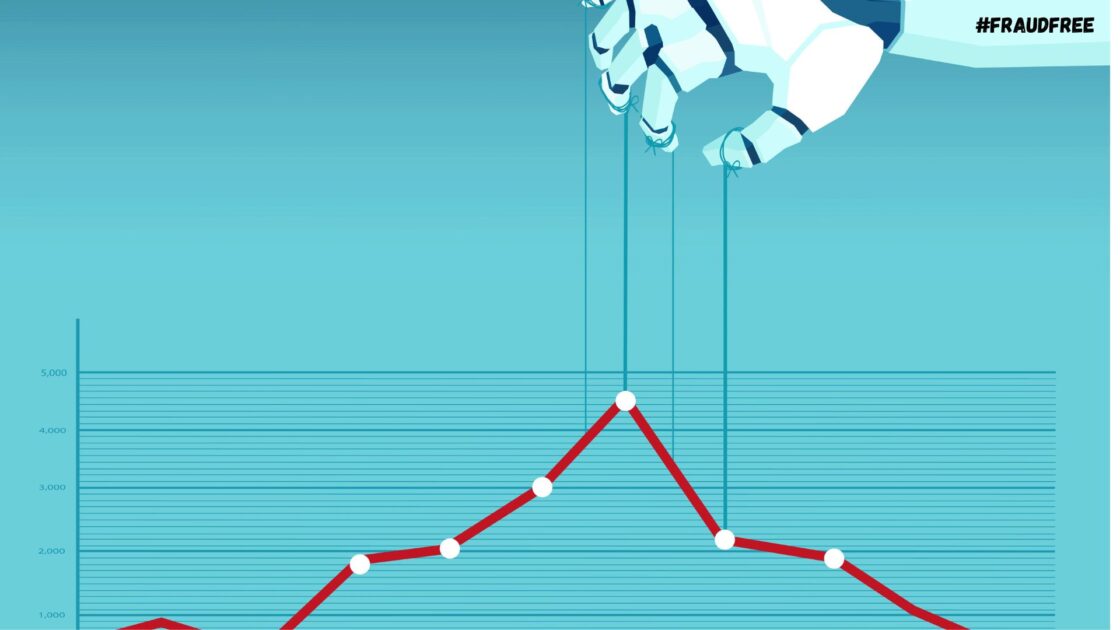In the world of stock trading, quick profits can sometimes come with even quicker losses, especially when you’re unknowingly part of a pump and dump scheme. This fraudulent practice has caused thousands of retail investors to suffer heavy losses, thinking they were getting in early on the next big thing.
But here’s the truth: there’s no shortcut to wealth in the stock market. You can’t trust every sharp price rise or social media tip. The only real protection? Awareness.
Let’s decode what a pump and dump scam is and how you can identify such stocks before it’s too late.
What is a Pump and Dump Scam?
A pump and dump is a stock market manipulation technique where fraudsters:
- Pump up a stock price through false, misleading, or exaggerated positive news.
- Then dump their holdings at the inflated price.
- This leaves unsuspecting retail investors trapped in a falling stock.
Such stocks are often low-volume penny stocks or illiquid small-caps that are easy to manipulate due to limited public interest.
Retail traders mostly fall for it because of:
- Fear of missing out (FOMO)
- Blind trust in stock tips from Telegram groups, influencers, or “insider sources”
- The belief that a sudden price rally means a breakout
- Lack of basic due diligence and financial education
How to Identify Pump and Dump Stocks in India?
Wondering, is pump and dump illegal in India?
Well, the answer is, it is illegal, and therefore it becomes important for retail traders to be more cautious.
Here are the tips that help you in identifying such stock manipulation:
1. Unusual Price Spike Without Any News
If a stock suddenly jumps 40–100% in a few sessions without any official announcement or financial update, it’s suspicious.
In such cases, it is important to check:
- The company’s website and BSE/NSE corporate announcements
- News on SEBI, MCA, or other trusted sources
- If there’s no reason for the rally, be cautious
2. Low Market Cap & Low Volume Stocks
Pump and dump targets are usually:
- Penny stocks (stock price below ₹10 or ₹20)
- Low market cap (below ₹100 crore)
- Very low trading volume — suddenly rising
These are easy to manipulate. Once the manipulators exit, there’s no one left to buy, and the stock crashes.
3. Promotions on WhatsApp, Telegram, or YouTube
If you see messages like:
“XYZ stock will be the next Tata Motors. Buy before it hits the upper circuit!”
This is classic bait. Many fake stock tip providers promote such stocks, often paid to do so by manipulators.
4. Promoter Holding & Share Pledging
Check the shareholding pattern:
- Are promoters reducing their stake?
- Is there a high percentage of pledged shares?
This could mean insiders are cashing out while the public is lured in.
5. Dubious Business Models & Websites
Fake or semi-operational companies often:
- Shows very little actual business activity
- Have shady or outdated websites
- Lack basic contact info or past results
If the company has zero online presence or questionable financials, it’s likely a trap.
Pump and Dump in Stocks – Case Study
In one shocking case, a listed company, Cressanda Solutions Limited, misled investors using a mix of false promises, media hype, and price manipulation. The company shared exaggerated projections, claimed upcoming big projects, and spread optimistic narratives across news platforms and social media.
As a result, retail investors rushed in, believing in the company’s so-called “turnaround story.”
The stock price kept hitting upper circuits with no substantial improvement in the company’s financials.
Behind the scenes, insiders and early investors gradually sold off their holdings. Once their profit-booking was complete, the stock price collapsed, leaving small investors stuck with massive losses.
Key Red Flags Noticed:
- Frequent upper circuits with no major corporate announcements
- Unrealistic future claims without official verification
- Promoter holding was decreasing quietly
- No improvement in fundamentals
This case clearly shows how stock price manipulation by even listed companies can trap unaware investors, reinforcing the importance of due diligence and avoiding herd mentality.
How to Protect Yourself from Pump & Dump Scam
Here’s a checklist to stay safe:
- Always check company fundamentals before buying
- Ignore unsolicited stock tips — no matter how tempting
- Avoid stocks with thin volumes or hitting frequent upper circuits
- Use stock screeners to check delivery percentage, volume spikes, and news alerts
- Follow SEBI-registered analysts, not influencers or “market gurus”
- Learn technical and fundamental analysis under proper mentorship
How to Report Pump and Dump in Stocks Scam?
Now, in case you have been trapped in any such stock manipulation or have identified such stock manipulation in the stock market, then you can take action.
Register with us now and learn how to complaint in SEBI or to stock exchanges to bring the scam to notice and prevent thousands of other retail traders from falling into the scam.
We will help you in drafting a complaint and also assist in follow-ups that help you get recovery of your losses.
Final Words
Losses in such scams can destroy portfolios and confidence. Instead of chasing overnight success, invest in financial education and long-term strategies. Learning how to analyze a company, read balance sheets, and apply technical indicators will always pay off more than any “hot tip.”
Pump and dump schemes exploit retail greed and lack of knowledge. But with awareness, discipline, and a skeptical eye, you can avoid becoming a victim. If something looks too good to be true, it probably is.







